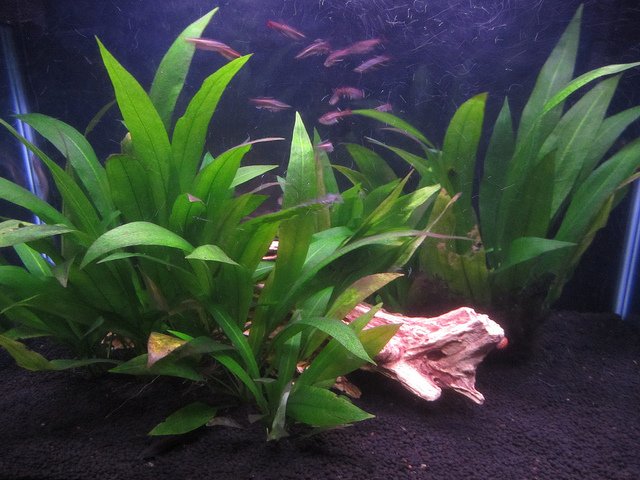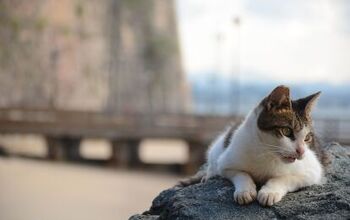Aquarium Basics: Let’s Talk About Amazon Sword Plants

When it comes to stocking a planted tank, you have many different options to choose from. You could go with assorted floating plants to give your tank a shaded appearance or you can go with various mosses for a natural appearance. One of the most popular aquarium plant species for freshwater tanks is the Amazon sword plant.
About the Amazon Sword Plant
The Amazon Sword plant is by far one of the most popular species of aquarium plant among freshwater hobbyists. This species is easy to grow and it produces lush green foliage that looks quite attractive in the aquarium. The Amazon Sword plant is known by the scientific name Echinodorus amazonicus and it is native to Brazil. This plant grows fairly slowly but it does get large, growing up to 1-foot 8 inches tall. Amazon Sword plants are the ideal background plant for planted tanks because they grow so tall and they propagate themselves. It is also interesting to note that Amazon Sword plants can grow partially submersed – this makes them a good addition to terrariums or ripariums as well as the traditional planted tank.
Related: How to Anchor Live Plants to Driftwood for a Natural Décor Scheme
Tank Requirements and Recommendations
The Amazon Sword plant is a hardy species, which is part of what makes it so popular among aquarium hobbyists. These plants only require a moderate level of care and they grow well in moderate to strong lighting. As is true for most aquarium plants, Amazon Swords need about 10 to 12 hours of full-spectrum lighting per day. For the best growth, make sure that your lighting system offers between 2 and 4 watts of lighting per gallon – this will vary depending on the size of your aquarium. To determine how many watts per gallon a particular bulb will provide, simply divide the total number of watts by the gallon size of your aquarium. For example, a 60-watt compact fluorescent bulb would offer 3 watts per gallon in a 20-gallon tank.
In addition to lighting, Amazon Swords also require certain nutrients in the tank water. These plants grow best in loose substrate that offers plenty of iron supplementation. Your Amazon Swords will draw most of their nutrients from the tank water (particularly nitrate and phosphate) but a nutrient-rich substrate will help to maintain healthy growth. EcoComplete is an excellent option, or you can put down a layer of fluorite or laterite under your regular substrate. You may also want to fertilize your Amazon Swords occasionally with a root tab to ensure proper growth.
Related: What Aquarium Plants Need to Thrive
As far as water conditions in your planted tank, Amazon Swords are fairly adaptable. They prefer a temperature range between 72 and 82 degrees with a water hardness between 3 and 8 dKH. The ideal pH range for this species is 6.5 to 7.5. Testing your tank water on a weekly basis will be very important for checking and maintaining the proper conditions in your tank. You also need to make sure you have a strong filtration system in place in addition to performing weekly water changes to maintain high water quality in your tank. Your filter will help to remove waste products from the tank water, as will your weekly water changes.
The Amazon Sword plant is a popular species among planted tank enthusiasts, and for good reason. Not only is it brightly colored and beautiful to behold, but it is easy to find in pet stores and also fairly easy to cultivate. If you are looking for a great plant to add to your planted freshwater aquarium, consider the Amazon Sword plant.

Kate Barrington is the loving owner of two cats (Bagel and Munchkin) and a noisy herd of guinea pigs. Having grown up with golden retrievers, Kate has a great deal of experience with dogs but labels herself a lover of all pets. Having received a Bachelor's degree in English, Kate has combined her love for pets and her passion for writing to create her own freelance writing business, specializing in the pet niche.
More by Kate Barrington






















